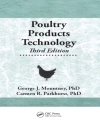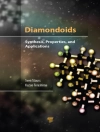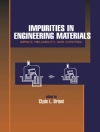The conventional solvents used in chemical, pharmaceutical, biomedical and separation processes represent a great challenge to green chemistry because of their toxicity and flammability. Since the beginning of “the 12 Principles of Green Chemistry” in 1998, a general effort has been made to replace conventional solvents with environmentally benign substitutes. Water has been the most popular choice so far, followed by ionic liquids, surfactant, supercritical fluids, fluorous solvents, liquid polymers, bio-solvents and switchable solvent systems.
Green Solvents Volume I and II provides a throughout overview of the different types of solvents and discusses their extensive applications in fields such as extraction, organic synthesis, biocatalytic processes, production of fine chemicals, removal of hydrogen sulphide, biochemical transformations, composite material, energy storage devices and polymers. These volumes are written by leading international experts and cover all possible aspects of green solvents’ properties and applications available in today’s literature.
Green Solvents Volume I and II is an invaluable guide to scientists, R&D industrial specialists, researchers, upper-level undergraduates and graduate students, Ph.D. scholars, college and university professors working in the field of chemistry and biochemistry.
Table of Content
From the Contents: Ionic Liquids as Green Solvents: Progress and Prospects.- Ionic Liquids as Green Solvents for Alkylation and Acylation.- Ionic Liquids as Green Solvents for Glycosylation Reactions.- Ionic Liquid Crystals.- Application of Ionic Liquids in Extraction and Separation of Metals.- Potential for Hydrogen Sulfide Removal Using Ionic Liquid Solvents.- Biocatalytic Reactions in Ionic Liquid Media.- Ionic Liquids/Supercritical Carbon Dioxide as Advantageous Biphasic Systems in Enzymatic Synthesis.- Ionic Liquids as Lubricants.
About the author
Ali Mohammad is Professor of Chemistry in the Department of Applied Chemistry, Faculty of Engineering and Technology, Aligarh Muslim University, Aligarh, India. His scientific interests include physico-analytical aspects of solid state reactions, micellar thin layer chromatography, surfactants analysis and green chromatography. He is the author or co-author of 230 scientific publications including research articles, reviews and book chapters. He had also served as editor of Journal, Chemical and Environmental Research being published from India since 1992 and as the Associate Editor for Analytical Chemistry section of Journal of Indian Chemical Society. He has been the member of editorial boards of Acta Chromatographica, Acta Universitatis Cibiniensis Seria F. Chemia, Air Pollution and Annals of Agrarian Science. He has attended as well as chaired sessions in various international and nation conferences. Dr. Mohammad obtained his M.Phil (1975), Ph.D. (1978) and D.Sc. (1996) degrees from Aligarh Muslim University, Aligarh, India. He has supervised 51 students for Ph.D./M.Phil and M.Tech. degrees.
Inamuddin, is currently working with the Department of Applied Chemistry, Aligarh Muslim University (AMU), India. He received his Master of Science degree in Organic Chemistry, from C.C.S. University, Meerut, India in 2002. He received his Master of Philosophy and Doctor of Philosophy degrees in Applied Chemistry, from AMU in 2004 and 2007, respectively. He is having extensive research experience in multi-disciplinary fields of Analytical Chemistry, Material Chemistry and Electrochemistry and more specifically Renewable Energy and Environment. He worked in different projects funded by University Grant Commission (UGC), Govt. India and Council of Scientific and Industrial Research (CSIR), Govt. India. He has published 25 research articles and three book chapters of international repute. He is editing one more book entitled “Ion-exchange Technology: Theory, Materials and Applications” to be published by Springer, United Kingdom. Recently, he edited a book entitled “Advanced Organic-Inorganic Composites: Materials, Devices and Allied Applications” and published by Nova Science Publishers, Inc. He is presently working as editor-in-chief of Journal, Chemical and Environmental Research being published from India. He worked as a Postdoctoral Fellow leading to a research team at Creative Research Initiative Center for Artificial Muscles, Hanyang University, South Korea in the field of renewable energy specially biofuel cells. He also worked as Postdoctoral Fellow at Center of Research Excellence in Renewable Energy, King Fahd University of Petroleum and Minerals, Saudi Arabia in the field of polymer electrolyte membrane fuel cells and computer fluid dynamics of polymer electrolyte membrane fuel cells. He is the life member of Journal of Indian Chemical Society.












